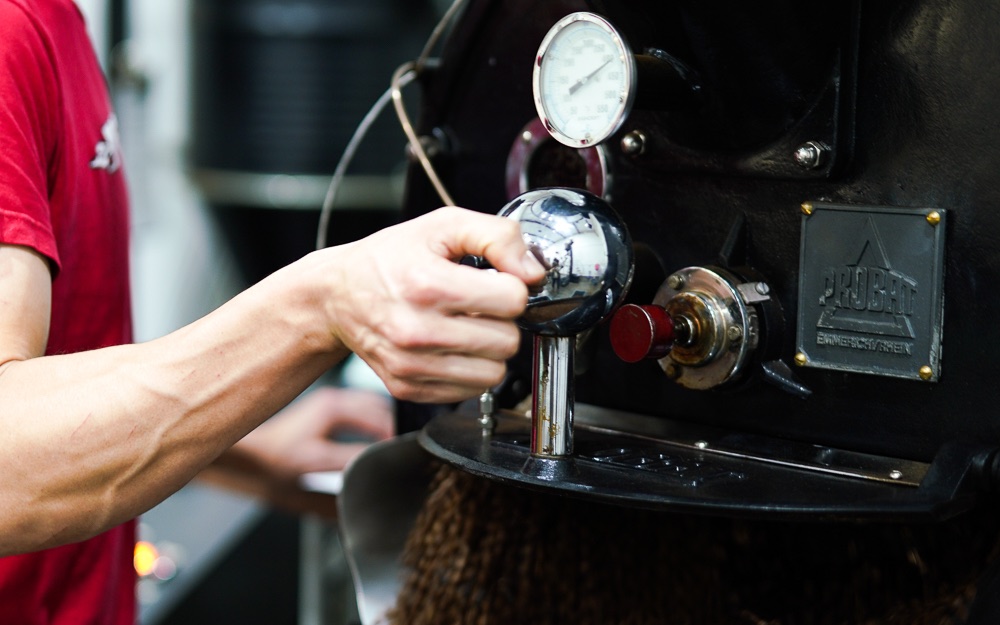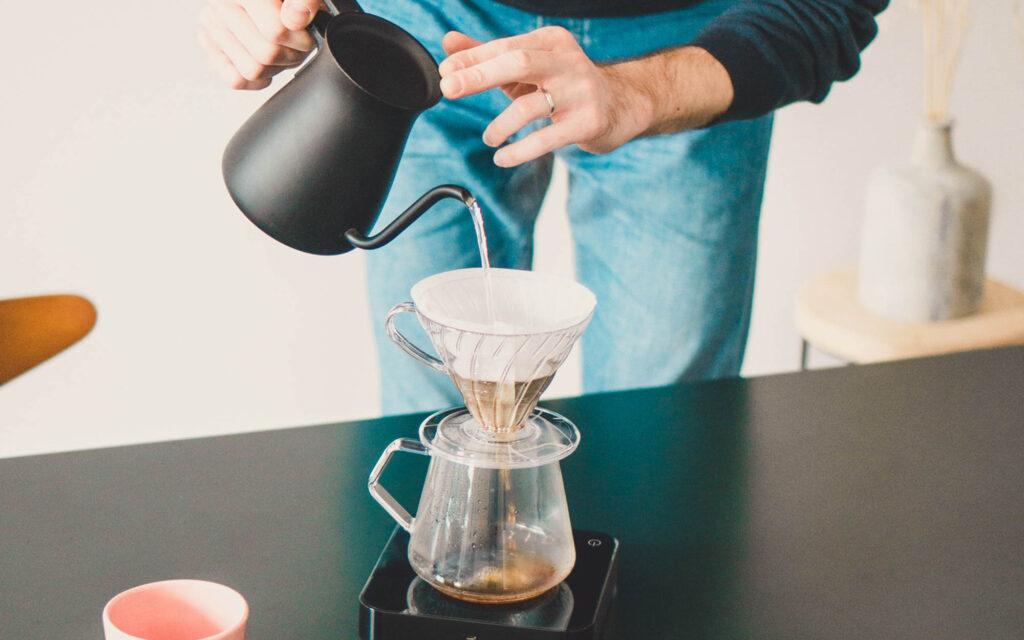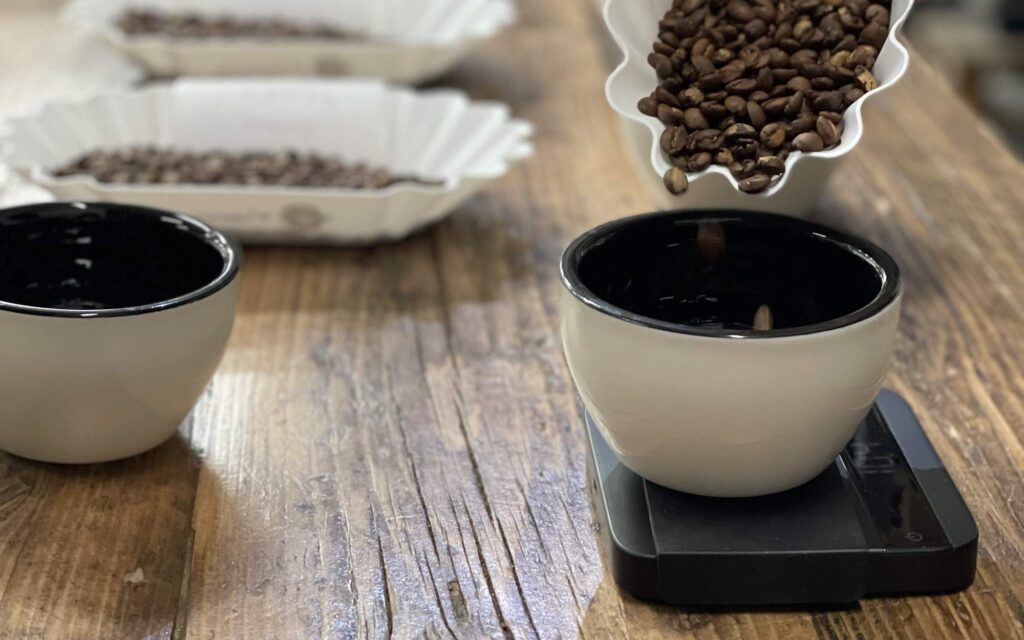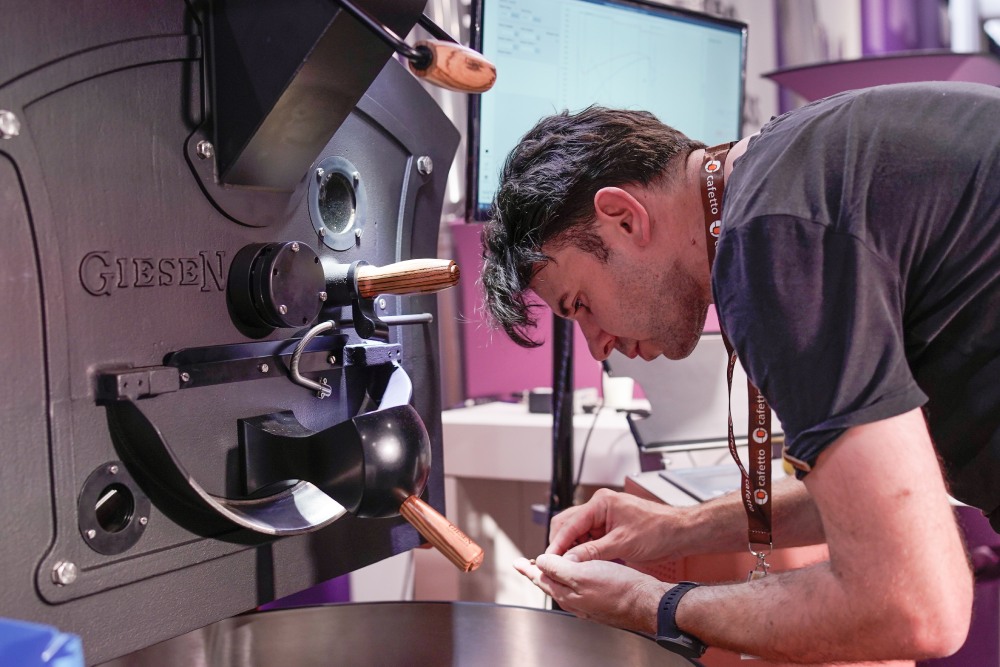How difficult is it to open a roastery after being a head roaster?

Like many other seasoned coffee professionals, head roasters have to spend years honing their skills and knowledge to reach their level of expertise. So eventually, it’s understandable that some head roasters decide to take the next step in their career and open their own roastery.
There are an almost endless number of factors to consider when starting your own roastery. These range from buying the most suitable roaster to having enough storage space for both green and roasted coffee.
The process can be overwhelming to say the least, so how can head roasters successfully launch their own roasting businesses?
To find out more, I spoke with Andrew Coe, 2023 US Coffee Roasting Champion, and Felix Teiretzbacher, 2022 World Coffee Roasting Champion. Read on for more of their insight.
You may also like our article on how coffee roasters progress after being a head roaster.
Career options for head roasters
The head roaster role is one of the most skilled and senior positions at any roastery. That doesn’t mean, however, that there aren’t opportunities for professional growth and development.
If head roasters wish to remain working in a roastery, there are several career paths they can explore. For example, a head of coffee (or director of coffee) often has similar responsibilities to a head roaster position. Some of these include blend and roast profile development, quality control, and cupping coffees.
Additionally, a director of coffee is usually in charge of sourcing and purchasing green coffee, as well as staff training and team leadership.
Other roles within a roastery include:
Production manager
Green coffee buyer
Wholesale manager
Product development lead
Beyond the roastery, there are more career opportunities for head roasters, including working at a green coffee importer or exporter.
Why open your own roastery?
For many head roasters, starting their own roastery is an exciting yet overwhelming prospect. It gives roasting professionals the chance to showcase their years of experience in their own unique way.
Andrew Coe is the owner and roaster at Elevator Coffee in Portland, Oregon. He tells me there are many reasons why a head roaster may want to start their own business.
“It can give you the opportunity to sell different products,” he says. “Being your own boss can also sound appealing. It works well for some people, but the decision also comes with a lot of additional responsibilities and administrative tasks which aren’t related to roasting.”
With more creative control, head roasters can take more ownership of their branding and marketing – and potentially establish a name for themselves in the industry.
“As the decision maker, you’ll be able to focus more on building closer working relationships with producers and importers,” Andrew adds. This could involve visiting farms to meet producers in person – helping to strengthen direct trade partnerships.
What should head roasters know before opening their own roastery?
For any aspiring roastery owner, Andrew says developing a thorough business plan to account for as many expenses as possible is imperative.
“You need to appropriately budget for all of the equipment that will suit your needs,” he says. “It’s also important to always keep realistic growth plans in mind.”
He recommends head roasters who are interested in starting their own business to ask themselves a few key questions beforehand. These include:
Does the prospective roasting space fit your business plan?
Will you need an afterburner for your machine?
Will neighbouring businesses be compliant with the level of noise and smell?
Will you have enough storage space for both green and roasted coffee?
What are the local/regional food and workplace health and safety requirements?
“Generally speaking, it’s about having a realistic business plan, being flexible when necessary, and adapting as you go,” Andrew explains.
He adds that roastery workflow is also crucial. When designing a workspace, roastery owners need to ensure all staff members work efficiently around each other.
“It’s essential to create a linear sequence for weighing out green coffee, loading into the roaster, unloading roasted coffee, and then destoning, packaging, and sealing coffee before organising it into orders for delivery or shipping,” Andrew says.
Investing in a roaster
Choosing which types of equipment to invest in is one of the most important decisions for new roastery owners. But at the same time, you also need to factor in how the equipment will fit into the roasting space.
Regardless of the size of your business, some equipment is absolutely essential for any roastery – especially the machine. However, the optimal roaster size and capacity ultimately depends on your individual needs.
First and foremost, you need to understand how much coffee you will roast on a daily or weekly basis. For instance, the capacity of most commercial machines ranges from sample roasters (between 50g and 500g) to medium-sized machines (15kg to 40kg) to large roasters (70kg and beyond).
Along with drum and fluid bed roasters, the type of energy source is also important to consider. Both gas and electric machines are popular for different reasons, but the decision also depends on the available outlets in your workspace. If no gas line is fitted, this will require a specialist to install one – meaning costs can quickly add up if not managed effectively.
Moreover, electric roasters are more environmentally responsible than gas-powered machines as they produce fewer carbon emissions. With sustainability becoming more important to consumers, a growing number of roasters are switching to electric machines.
Other pieces of equipment
Felix Teiretzbacher is the founder and owner of Felix Kaffee in Austria. He tells me he opened his roastery 11 years ago using a 7.5kg drum roaster. A year later, he bought a sample roaster and a 30kg-capacity drum roaster.
“Besides your main roaster, you should also invest in a sample roaster, moisture/density and colour reading meters, large and small scales, scoops, brewing and cupping equipment, grinders, a water filtration system, and an espresso machine, as well as plenty of plastic tubs and bags,” he explains.
It’s important to note that industrial scales used in a roastery should be trade approved so all measurements are consistent and accurate. This ensures all customers (including wholesale clients) receive the correct amount of coffee for every order.
Other essential pieces of equipment include a destoner, a weigh-and-fill system and heat sealer for packaging roasted coffee, and specialist machinery to mix different coffees for blends.
“Investing in an afterburner, as well as an exhaust stack, which can handle excessive heat produced from roasting is also crucial,” Andrew says. “You will also need separate food-safe containers and scoops for both green and roasted coffee to prevent cross-contamination.”
He also advises using management software to keep track of all areas of your business. This can include roast profiles, green and roasted coffee inventories, orders, and staff scheduling.
Accounting for space
In most cases, the space of a roastery is just as important as the equipment.
Felix explains how he started Felix Kaffee in the back of a coffee shop so he could use the espresso machine, water filtration system, and V60 brewers to taste his roasted coffee samples.
“For each individual, there is the ‘best’ and most affordable way to start your business,” he says.
Andrew, meanwhile, emphasises that the size of your roastery largely depends on how much coffee you need to roast on a weekly basis – and whether you plan to scale operations in the future.
“If you roast less than 200lbs per week (around 91kg), you could potentially start your business in a coffee shop or another small space,” he explains. “At around 1,000lbs per week (about 454kg), you may need a roastery which can accommodate multiple employees and an office space.”
Similarly, there will also need to be ample storage room for green and roasted coffee, as well as dedicated spaces for quality control, cupping, packing and filling coffee bags, and even training.
Sourcing & selling coffee
For any new roastery owner, standing out from your competitors is crucial. In line with this, you need to consider which coffees you want to sell – including different origins, varieties, and processing methods.
“Ask yourself if there is a gap in the market that you can fill – as long as the product is in line with your branding and marketing,” Andrew explains. “You want to cater to existing demand, but also create your own niche that customers will connect with.”
Offering both blends and single origins is important to accommodate a range of consumer preferences. For example, some head roasters may decide to source more single origins to align with their brand identity, while others want to focus more on blends. Ultimately, there’s no right or wrong way – as long as you strike a balance and listen to your customers’ needs.
Tips & advice for new roastery owners
Opening your own roasting business can be daunting, but it’s certainly possible with the right level of investment and dedication.
Felix says establishing close relationships with producers and importers is critical. While origin trips aren’t always the most accessible option, he also suggests connecting with producers through social media or by attending international coffee events.
“After buying coffee from a particular farm, you should give the producers feedback – whether it’s positive or negative,” he says. “This helps to build a strong working relationship, [as long as they provide you with feedback, too.]
“Try to connect with as many other industry professionals as possible,” Felix adds. “Attend open cuppings, try to get feedback from other roasters, and never stop learning more about coffee.”
Andrew agrees, and says curiosity and passion are two of the most important qualities for a new roastery owner to have.
“Taste as many different coffees as you can and as often as possible, especially with other coffee professionals who you trust,” he tells me. “Also, drink coffee from roasters who inspire you.
“If you’re excited about the coffee you buy then it’s easier for your customers to feel the same,” he adds.
Looking for new opportunities
Specialty coffee is always evolving, which means career opportunities are changing, too. Whether you’re a head roaster looking to start your own business or new to roasting coffee and not sure where to progress in your career, industry-specific job boards like PDG Jobs are useful resources.
This jobs board hosts listings from some of the most established brands in the specialty coffee sector, and includes a wide range of positions – from barista to green coffee buyer and anything in between.
As an experienced head roaster, starting your own roastery can be an exciting part of your career. At the same time, however, it can be somewhat impossible to know where to begin – with countless details to consider.
But no matter what the next phase of your professional journey looks like, platforms like PDG Jobs are a useful way for any coffee professional to consider their options.
Looking for new positions in the coffee industry? Check out PDG Jobs here.
Photo credits: Rie Sawada
Perfect Daily Grind
Want to read more articles like this? Sign up for our newsletter!
The post How difficult is it to open a roastery after being a head roaster? appeared first on Perfect Daily Grind.





Responses